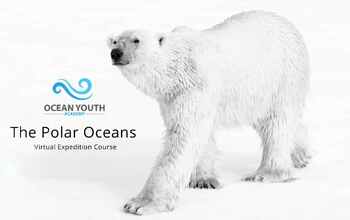Polar Oceans Course- Downloadable PDF Workbook and Supporting Videos
- PDF
Description
Polar Oceans Course Overview: The Polar Oceans Course is an immersive 10-session virtual expedition designed by Ocean Youth Academy (OYA) to bring the wonders of the polar regions into classrooms worldwide. Led by experienced polar expedition guides, the course allows student's to dive into the unique ecosystems of the Arctic and Antarctic, exploring topics such as wildlife, climate change, and conservation.
Key Features:
- Virtual Expedition Experience: Students embark on a virtual journey, encountering polar wildlife, landscapes, and the challenges these regions face.
- NGSS-Aligned Content: The course aligns with Next Generation Science Standards (NGSS), providing educators with a ready-made resource for enhancing their science curriculum.
- Real-World Context: Through stories and first-hand experiences, students gain a profound understanding of the fragility and importance of polar ecosystems.
- Scholarship Opportunities: Completing the course and associated project opens the door to a full-ride scholarship for students to participate in a sponsored polar expedition with the OYA team.
Associated Workbook: The Polar Oceans Course is complemented by an optional workbook, carefully designed to enrich the learning experience:
- Supplemental Learning Material: The workbook serves as a companion, offering additional reading materials, exercises, and activities to deepen students' understanding.
- Interactive Exercises: Engaging exercises allow students to apply concepts learned during the virtual expedition, promoting active learning and critical thinking.
- Assessment Tools: Educators can use the workbook for formative assessments, ensuring students grasp key concepts and skills.
- Customizable Content: The workbook is designed to be adaptable, allowing educators to tailor certain sections to suit the specific needs and pace of their students.
Usefulness for Educators:
- Ready-Made Resource: The Polar Oceans Course, with its NGSS alignment, provides educators with a turnkey solution for integrating polar marine science into their curriculum.
- Engaging and Relevant: The virtual expedition and workbook offer an engaging approach to teaching, making complex scientific concepts accessible and relevant to students.
- Global Awareness: Educators can leverage the course to foster global awareness and environmental stewardship among students.
- Scholarship Incentive: The prospect of earning a full-ride scholarship adds an extra layer of motivation for students, creating a unique and impactful learning experience.
In summary, the Polar Oceans Course, coupled with its workbook, serves as a valuable resource for educators seeking to inspire a love for marine science, environmental conservation, and global awareness in their students.
Full course versions available through OYA's Virtual Classroom. Check it out!
Individual and bulk-enrollment options available for:
Level 1: Ages 8-12
Level 2: Ages 12-14
Level 3: Ages 14-19
Contact OYA team for more info: Info@oceanyouthacademy.com


